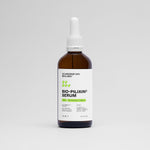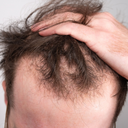Hair growth is a common concern for many individuals, and with numerous methods available to promote it, people are increasingly curious about the efficacy of different techniques. One method that has gained popularity in recent years is head massage. This article will explore the relationship between head massages and hair growth, providing a thorough analysis of whether head massages can indeed help in promoting healthier hair growth.
Table of content
Do head massages help hair growth?
Yes, head massages can help promote hair growth. They improve blood circulation to the scalp, which nourishes hair follicles and encourages hair growth. Additionally, head massages can reduce stress, which is a common factor that contributes to hair loss. By relieving tension and stimulating the scalp, head massages create an optimal environment for hair growth.
To delve deeper into the effects of head massages on hair growth, it’s important to understand the underlying mechanisms at play. When you massage the scalp, you increase blood flow to the area. This enhanced circulation brings essential nutrients and oxygen to the hair follicles, which are crucial for healthy hair growth. Hair follicles require a consistent supply of nutrients to function effectively, and improved blood circulation ensures that they receive what they need. Moreover, the act of massaging the scalp can help to unclog hair follicles, which may have been blocked by excess oil or product buildup.
Another significant benefit of head massages is their ability to reduce stress levels. Stress is known to be a contributing factor to hair loss and can exacerbate conditions like telogen effluvium, where hair falls out in response to stress. By incorporating regular head massages into your routine, you can create a calming effect that not only alleviates tension but also promotes mental well-being. Reduced stress levels can, in turn, lead to a healthier scalp and improved hair growth.
In addition to increasing blood circulation and reducing stress, head massages can also help to balance the production of sebum on the scalp. Sebum is the natural oil produced by our skin, and maintaining a healthy balance of sebum is essential for hair health. An oily scalp can lead to clogged follicles, while a dry scalp can cause flakiness and irritation. Regular head massages can help to distribute sebum evenly across the scalp, promoting a healthier environment for hair growth.
Moreover, head massages can stimulate the production of certain hormones that are beneficial for hair growth. Some studies suggest that massage can increase levels of prostaglandin E2 and other growth factors in the scalp, which can encourage hair follicle activity and proliferation. This biological response can lead to thicker, healthier hair over time.
To make the most of head massages for hair growth, consider incorporating essential oils known for their beneficial properties. For instance, rosemary oil has been shown to improve circulation and promote hair growth. When combined with a scalp massage, it can enhance the effectiveness of the treatment. Other oils like peppermint and lavender also have properties that can stimulate hair follicles and promote relaxation.
Implementing a regular head massage routine can be simple. Aim for a massage of about 10 to 15 minutes a few times a week. You can use your fingertips to apply gentle pressure in circular motions across your scalp. Focus on areas where you might be experiencing hair thinning or loss. This practice can easily be integrated into your self-care routine, making it a relaxing and beneficial activity.
While head massages are a great addition to your hair care regimen, it's important to combine them with other healthy hair practices. Eating a balanced diet rich in vitamins and minerals is crucial for hair health. Nutrients such as biotin, zinc, and vitamins A, C, D, and E play vital roles in hair growth and strength. Additionally, staying hydrated and avoiding excessive heat styling can further support your hair growth journey.
In conclusion, incorporating head massages into your hair care routine can be an effective way to promote hair growth. The benefits of improved blood circulation, stress reduction, and enhanced sebum balance, along with the potential hormonal effects, all contribute to healthier hair. By combining head massages with a healthy lifestyle and proper hair care, you can create the perfect environment for your hair to thrive.
```Tired of Thinning Hair? Try a Clinically Tested Serum.
Looking for a natural way to regrow hair and achieve a thicker, fuller head of hair? Ditch the stinging nettle for hair loss – Bio-Pilixin Serum is a drug-free hair activation serum that delivers clinically tested results.
Here's why Bio-Pilixin is superior:
- Clinically Tested Results: 93% of users saw a reduction in hair loss, and 73% experienced increased hair density.
- Safe and Natural: Unlike harsh chemicals, Bio-Pilixin uses plant growth factors derived from stem cell technology to nourish hair follicles and stimulate growth.
- Fast-Acting: See visible results in as little as 45 days (most typically see results within 150 days).
Stop wasting time on unproven remedies. Bio-Pilixin is the safe, natural serum you've been searching for.
Read more:
- The 11 Best Dermatologists Recommended Shampoos To Buy In the UK (2025)
- 13 Best Shampoos For Volume To Buy in the UK (2025)
- The 7 Best Shampoo For Older Women To Buy in 2025
As your leading source for hair health information over the past 4 years, we never compromise on accuracy. When it comes to your health, you deserve information you can truly rely on - and earning your trust is our top priority.
Here's how Scandinavian Biolabs ensures every piece of content meets the highest standards of accuracy and integrity:
- Credentialed Experts: Our reviewers are actively practicing doctors and medical researchers
- Stringent Reviews: Content undergoes rigorous editing by subject specialists and review by a practicing doctor.
- Evidence-Based: We rely on well-established research from trusted scientific sources like peer-reviewed journals and health authorities.
- Full Transparency: Our editorial standards, writer credentials, reviewer credentials, correction process, and funding are all publicly documented.
- Independent Voice: While we do promote products, we operate in a vacuum to business operations. Our main goal is just an unwavering commitment to providing medically-sound guidance.
You can count on Scandinavian Biolabs to consistently deliver the trustworthy health information you deserve. Read our Editorial Standards.






